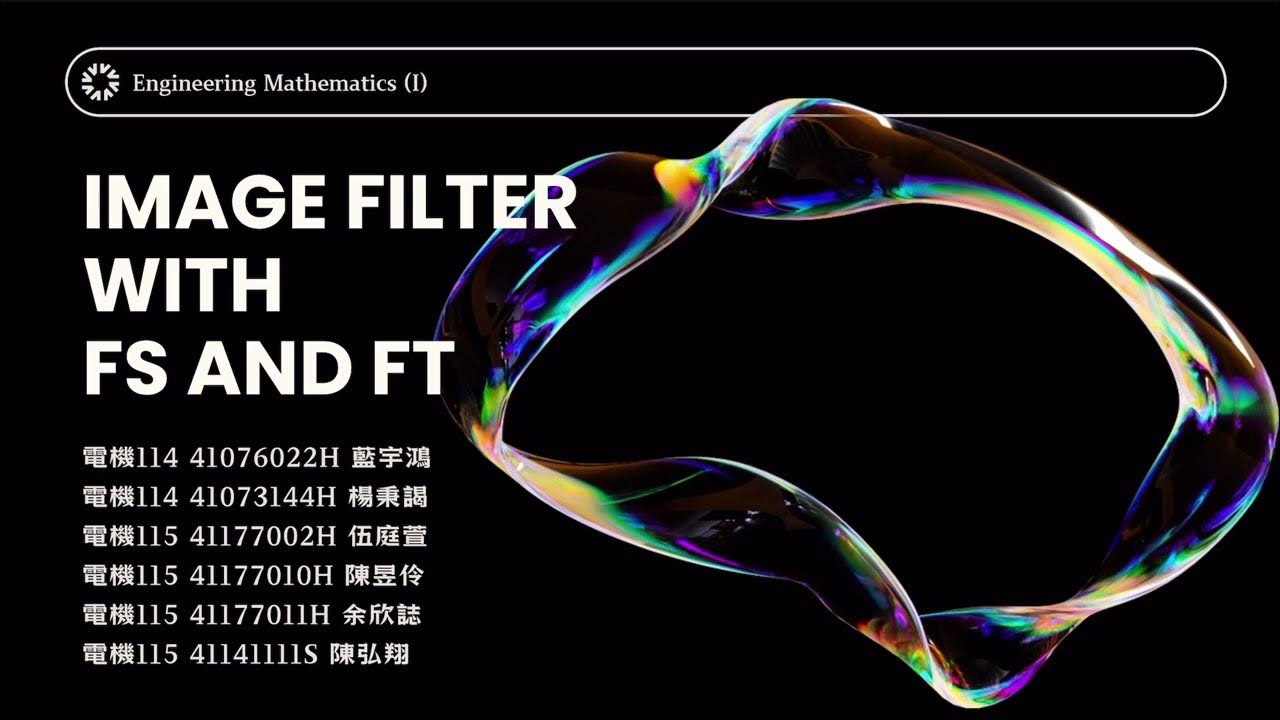Pengolahan Sinyal Digital: 12 Filtering Domain Waktu dan Frekuensi
Summary
TLDRThis video covers digital signal processing with a focus on filtering techniques in both the time and frequency domains. It explains time-domain filtering through convolution, using examples like moving averages to remove noise from signals. Additionally, the frequency-domain filtering approach, which involves Fourier transforms, is introduced, demonstrating how to manipulate signal frequencies to remove unwanted noise. The video also explores the impact of filtering on audio compression, highlighting how MP3 files reduce size by filtering high frequencies, balancing quality and file size. The overall aim is to simplify complex filtering concepts for signal processing applications.
Takeaways
- 😀 Filtering can be performed in both the time domain (spatial domain) and the frequency domain, each with distinct methods and applications.
- 😀 In the time domain, filtering is done through **convolution**, where a signal is combined with its neighbors based on a window function.
- 😀 **Moving average filters** are a common time-domain filtering technique used to smooth out noise by averaging neighboring data points.
- 😀 The size of the window in time-domain filtering (e.g., moving average) significantly impacts the level of noise reduction and data preservation.
- 😀 **Convolution** involves multiplying the signal by the window function, summing the products, and applying this operation across the entire signal.
- 😀 The **Fourier Transform** is crucial in the frequency domain, transforming a signal into its frequency components for easier filtering and modification.
- 😀 In the frequency domain, filtering involves manipulating the frequency components, such as removing unwanted high frequencies while retaining the important low frequencies.
- 😀 **Band-pass filters** are often used in the frequency domain to allow specific frequency ranges to pass through while blocking others.
- 😀 **MP3 compression** is an example of frequency-domain filtering, where high-frequency components are discarded to reduce file size without significantly affecting audio quality.
- 😀 **Noise reduction** in signal processing can be achieved by removing high-frequency fluctuations using moving averages or frequency-domain filtering techniques.
- 😀 The effectiveness of frequency-domain filtering, like in MP3 compression, is based on human perception, as certain high frequencies are less noticeable to the human ear.
Q & A
What are the two types of filtering discussed in the script?
-The two types of filtering discussed are filtering in the time domain (spatial domain) and filtering in the frequency domain.
What is the key difference between filtering in the time domain and the frequency domain?
-In the time domain, both the input and output signals are in lowercase form, and the operation is performed directly on the data. In the frequency domain, the signal is first transformed using Fourier transform, then filtered, and finally transformed back to the time domain.
What mathematical operation is involved in filtering in the time domain?
-Filtering in the time domain involves convolution, a mathematical operation that combines input data with a filter or kernel to produce the output signal.
How does convolution work in the context of time-domain filtering?
-Convolution involves multiplying the input data by a filter at various time shifts, summing the results to produce the output at each point. This operation considers both the neighboring data points and their values.
What is the concept of a 'window' in time-domain filtering?
-A window refers to the filter applied to a segment of the input signal, which involves considering the neighboring data points to adjust the current value. The window can have different sizes depending on the filter's purpose.
What is moving average filtering, and how does it help with noise reduction?
-Moving average filtering is a technique where each data point is replaced by the average of its neighboring points. This helps reduce noise by smoothing the signal, especially when high-frequency fluctuations are present.
How does increasing the window size affect the result of a moving average filter?
-Increasing the window size results in more neighboring points being considered, leading to a smoother signal and more noise reduction. However, it may also cause a loss of detail in the signal.
What is the role of Fourier transform in frequency-domain filtering?
-Fourier transform is used to convert the input signal from the time domain to the frequency domain, allowing for easier manipulation and filtering of specific frequency components before transforming it back to the time domain.
How is a frequency-domain filter applied to the signal?
-In the frequency domain, the filter is applied by multiplying the transformed signal by a filter function, which selectively attenuates or enhances specific frequency components.
What is an example of practical frequency-domain filtering mentioned in the script?
-An example is filtering out noise in audio signals, such as in MP3 compression, where high-frequency components are removed to reduce file size while maintaining audio quality.
Outlines

This section is available to paid users only. Please upgrade to access this part.
Upgrade NowMindmap

This section is available to paid users only. Please upgrade to access this part.
Upgrade NowKeywords

This section is available to paid users only. Please upgrade to access this part.
Upgrade NowHighlights

This section is available to paid users only. Please upgrade to access this part.
Upgrade NowTranscripts

This section is available to paid users only. Please upgrade to access this part.
Upgrade NowBrowse More Related Video

工程數學(一)期末報告 Group 5

Pengolahan Sinyal Digital: 08 Domain Sinyal dan Transformasinya

What is a Spectrum Analyzer | How Does a Spectrum Analyzer Work

Materi Transformasi Fourier - MK Matematika Radiologi

Fourier Transform Properties Explained

Pengolahan Sinyal Digital: 09 Transformasi Fourier, STFT & Wavelet Transform
5.0 / 5 (0 votes)